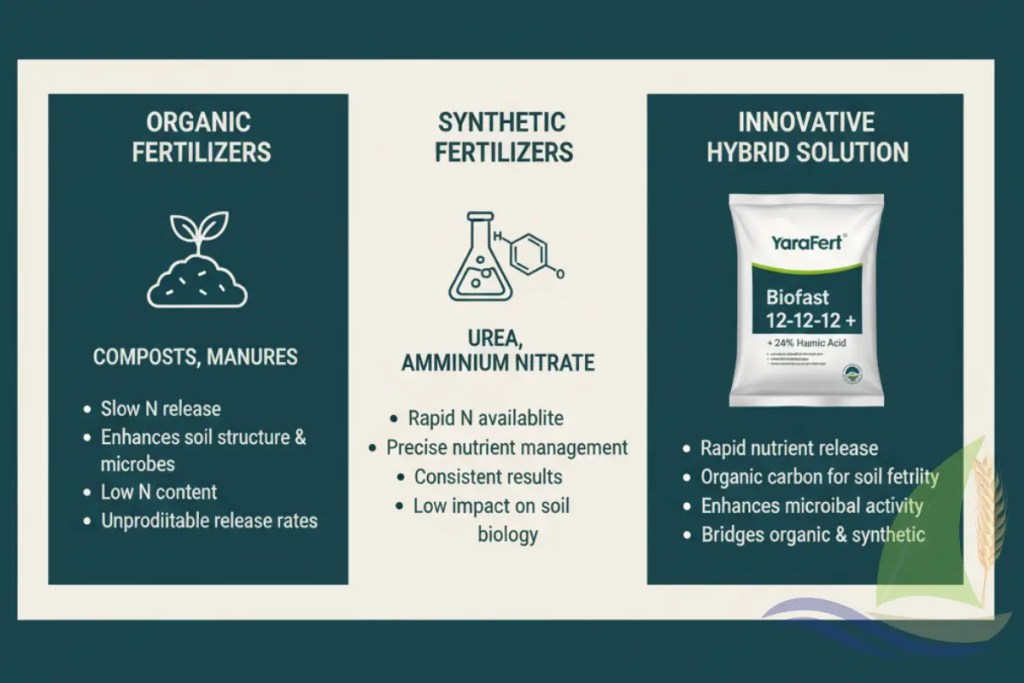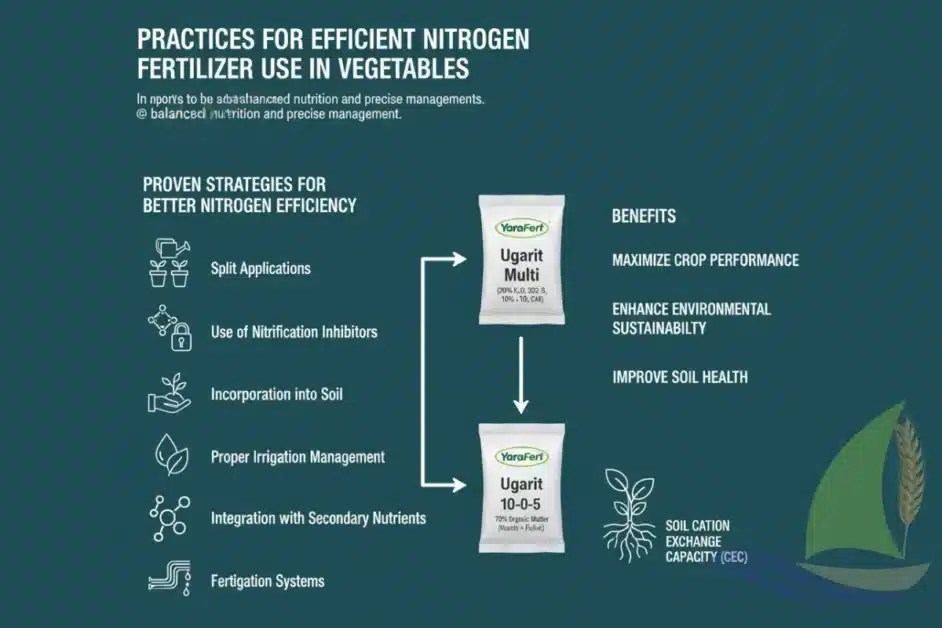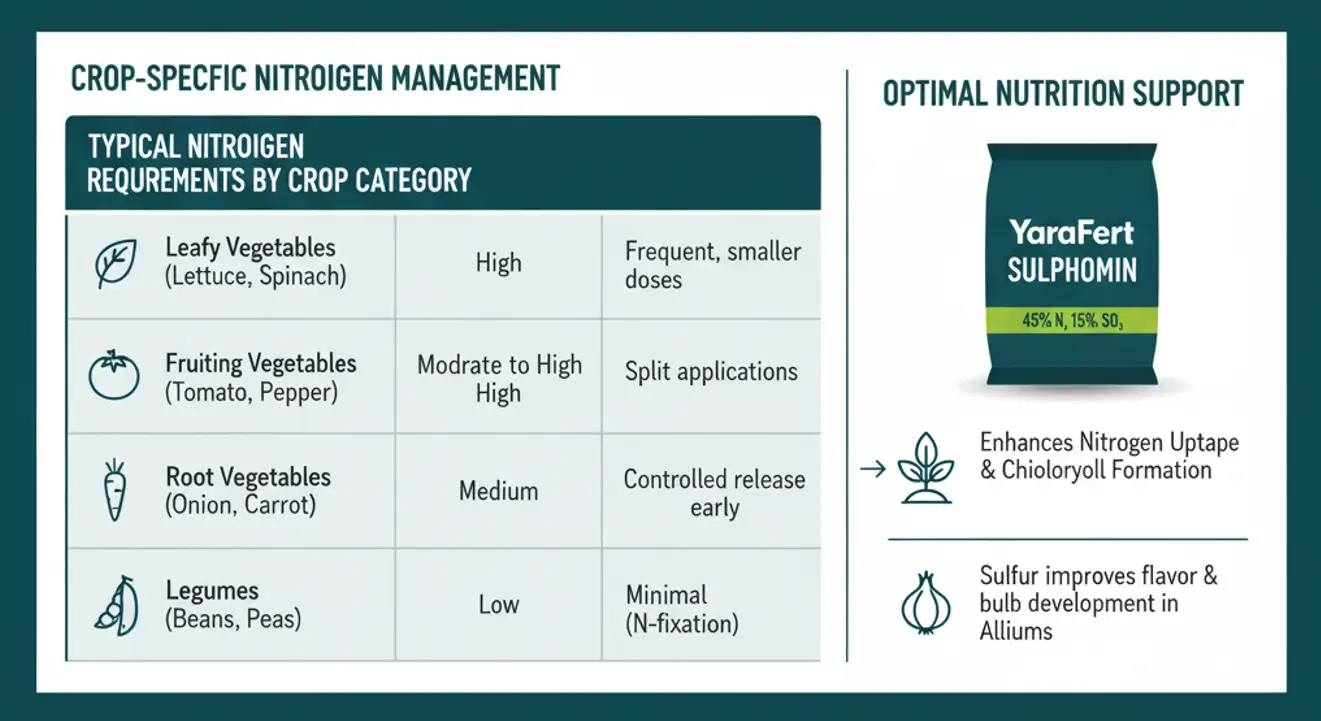Nitrogen fertilizer is the cornerstone of successful vegetable production. As the most essential nutrient for plant growth, nitrogen drives leaf development, chlorophyll synthesis, and overall yield potential. For vegetable growers in Africa and beyond, using the right nitrogen fertilizer — and applying it efficiently — can mean the difference between moderate and exceptional harvests.
Whether you grow tomatoes, cabbage, onions, or leafy greens, understanding how nitrogen fertilizer works is key to optimizing both productivity and profitability. In this comprehensive guide, we’ll explore how to tailor nitrogen fertilizer use for vegetables, integrate sustainable practices, and utilize advanced YaraFert formulations like SULPHOMIN, Biofast, and Ugarit blends for maximum efficiency.
How Vegetable Types Affect Nitrogen Fertilizer Plans
Different vegetables require different nitrogen fertilizer management strategies. Leafy crops such as lettuce, spinach, and cabbage demand a steady nitrogen supply for lush growth, while root vegetables like carrots and onions need moderate but consistent feeding to avoid excessive foliage and poor root formation.
Nitrogen fertilizer application must therefore align with crop physiology and growth patterns. Overuse can lead to delayed maturity or nitrate accumulation, while underuse stunts growth and reduces yield.
Typical Nitrogen Requirements by Crop Category:
| Crop Type | Nitrogen Demand | Nitrogen Fertilizer Recommendation |
|---|---|---|
| Leafy Vegetables (Lettuce, Spinach, Cabbage) | High | Frequent, smaller doses throughout growth |
| Fruiting Vegetables (Tomato, Pepper, Eggplant) | Moderate to High | Split applications at vegetative and fruiting stages |
| Root Vegetables (Onion, Carrot, Beetroot) | Medium | Controlled release early in growth cycle |
| Legumes (Beans, Peas) | Low | Minimal, as they fix atmospheric nitrogen |
To complement crop-specific needs, SULPHOMIN — with 45% nitrogen and 15% sulfur (SO?) — supports optimal nitrogen uptake, improving chlorophyll formation and vegetative vigor. Sulfur is especially beneficial for allium crops like onions and garlic that depend on sulfur-amino acids for flavor and bulb development.
Scheduling Nitrogen Fertilizer Across Growth Stages
Proper scheduling of nitrogen fertilizer ensures that plants receive nutrients exactly when they need them most. Vegetables typically go through three key phases: early establishment, vegetative growth, and reproductive or bulking stages.
A practical nitrogen scheduling approach includes:
- Basal Application:
At planting, apply 20–30% of the total nitrogen fertilizer to stimulate early root development. Combining nitrogen with phosphorus-rich products like Ugarit 40-10-10 + TE enhances root initiation. - Top Dressing:
Apply 40–50% during rapid vegetative growth. CALCIMAG (15% N, 22% CaO, 3% MgO) works well in this phase, improving nitrogen uptake while strengthening cell walls for better fruit firmness. - Finishing Dose:
The remaining 20–30% should be applied during fruiting or bulking. Balanced products like Ugarit 27-27-27 + TE or Ugarit 10-10-40 + TE ensure nitrogen availability alongside potassium for fruit quality and shelf life.
The timing and distribution of nitrogen fertilizer must also consider soil texture, irrigation, and rainfall patterns. Sandy soils, for instance, require smaller, more frequent doses to prevent leaching.
READ MORE: How to Apply Nitrogen Fertilizer to Rice Paddies
Organic vs. Synthetic Nitrogen Fertilizer for Vegetables

Choosing between organic and synthetic nitrogen fertilizer depends on production goals, soil condition, and sustainability considerations.
Organic nitrogen fertilizers, such as composts or manures, release nitrogen slowly as they decompose. They enhance soil structure and microbial life, which benefits long-term fertility. However, their nitrogen content is typically low and release rates unpredictable.
Synthetic nitrogen fertilizers, including urea, ammonium nitrate, and nitrate-based products, provide quick nitrogen availability for fast-growing vegetables. They allow precise nutrient management and consistent results.
For farmers seeking a balance, Biofast offers an innovative hybrid solution. With 12% N, 12% P?O?, 12% K?O, and a remarkable 24% humic acid and 24% fulvic acid, Biofast combines rapid nutrient release with organic carbon compounds that enhance soil fertility and microbial activity — bridging the gap between organic and synthetic systems.
Monitoring Response to Nitrogen Fertilizer in Vegetables
Continuous monitoring ensures that your nitrogen fertilizer strategy matches actual crop needs. Nitrogen response can vary based on weather, soil type, and irrigation efficiency.
Key Indicators to Track:
- Leaf Color: Pale green or yellow leaves often signal nitrogen deficiency, while dark, lush foliage may indicate excess.
- Growth Rate: Slow growth and small leaves point to insufficient nitrogen fertilizer.
- Tissue Testing: Laboratory analysis of leaf nitrogen concentration provides accurate feedback for mid-season adjustments.
- Yield and Quality Metrics: Consistent fruit size and uniform color reflect optimal nitrogen balance.
To enhance monitoring precision, many growers use handheld chlorophyll meters or optical sensors that estimate nitrogen status. When deficiencies are detected, liquid formulations such as Ugarit Cereal (15% N + 2% Cu) provide a fast-acting foliar boost, correcting nitrogen shortages within days.
Moreover, micronutrient-rich products like SULFOMIX (Fe 6%, Zn 3%, Mn 2%, B 3%) can be used alongside nitrogen fertilizer to prevent secondary deficiencies that often mask nitrogen response.
READ MORE: Best Nitrogen Fertilizer Strategies for Wheat Fields
Best Practices for Efficient Nitrogen Fertilizer Use in Vegetables

Maximizing nitrogen fertilizer efficiency is essential not only for crop performance but also for environmental sustainability. Nitrogen losses through leaching, volatilization, and denitrification can reduce fertilizer effectiveness and increase costs.
Proven Strategies for Better Nitrogen Efficiency:
Before diving into the details, it’s important to note that nitrogen fertilizer efficiency improves dramatically when combined with balanced nutrition and precise management.
- Split Applications: Avoid applying all nitrogen at once. Multiple, smaller doses match plant demand and minimize losses.
- Use of Nitrification Inhibitors: Stabilized products slow nitrogen conversion, reducing leaching.
- Incorporation into Soil: Placing nitrogen fertilizer below the surface reduces volatilization losses.
- Proper Irrigation Management: Avoid overwatering, which washes nitrogen out of the root zone.
- Integration with Secondary Nutrients: Products like Ugarit Multi (30% K?O, 32% S, 10% CaO) supply potassium and sulfur that complement nitrogen for better protein synthesis and nutrient uptake.
- Fertigation Systems: Deliver nitrogen fertilizer via drip irrigation for efficient nutrient use and uniform distribution.
In addition, products with organic matter such as Ugarit 10-0-5 + 70% Organic Matter (Humic + Fulvic) enhance soil cation exchange capacity (CEC), helping the soil retain nitrogen and release it gradually to plant roots.
Conclusion: Empowering Vegetable Farmers Through Smarter Nitrogen Management
Efficient use of nitrogen fertilizer is one of the most powerful ways to boost vegetable yields, improve produce quality, and sustain soil health. Whether through traditional granular applications or advanced liquid solutions, nitrogen remains at the heart of modern vegetable nutrition strategies.
Innovative solutions like YaraFert SULPHOMIN, Biofast, CALCIMAG, and the Ugarit series are helping farmers achieve optimal nitrogen efficiency by integrating balanced nutrition, organic matter, and micronutrients into one system. These products not only support strong vegetative growth but also contribute to long-term soil vitality and environmental stewardship.
Are you ready to take your vegetable production to the next level?
? Explore YaraFert’s range of nitrogen fertilizers and integrated nutrient solutions today. Our agronomy experts can help you design a customized nitrogen fertilizer plan for your crops, ensuring healthier plants, higher yields, and sustainable soil fertility.
Visit our website or contact the YaraFert team for personalized support and expert recommendations tailored to your vegetable farming needs.
READ MORE: Nitrogen Fertilizer for Corn: Timing, Products & Recommendations

